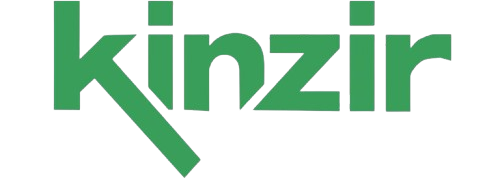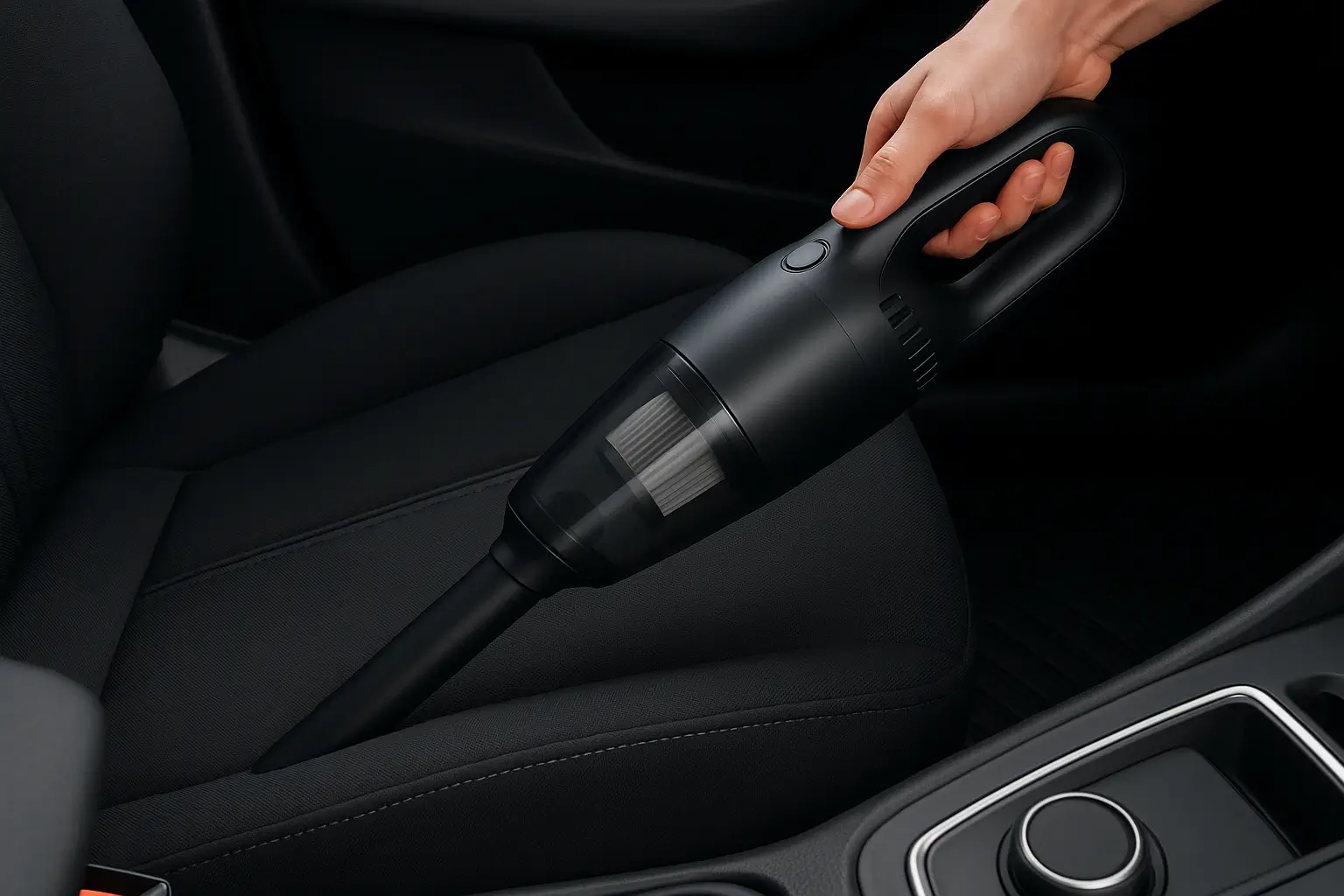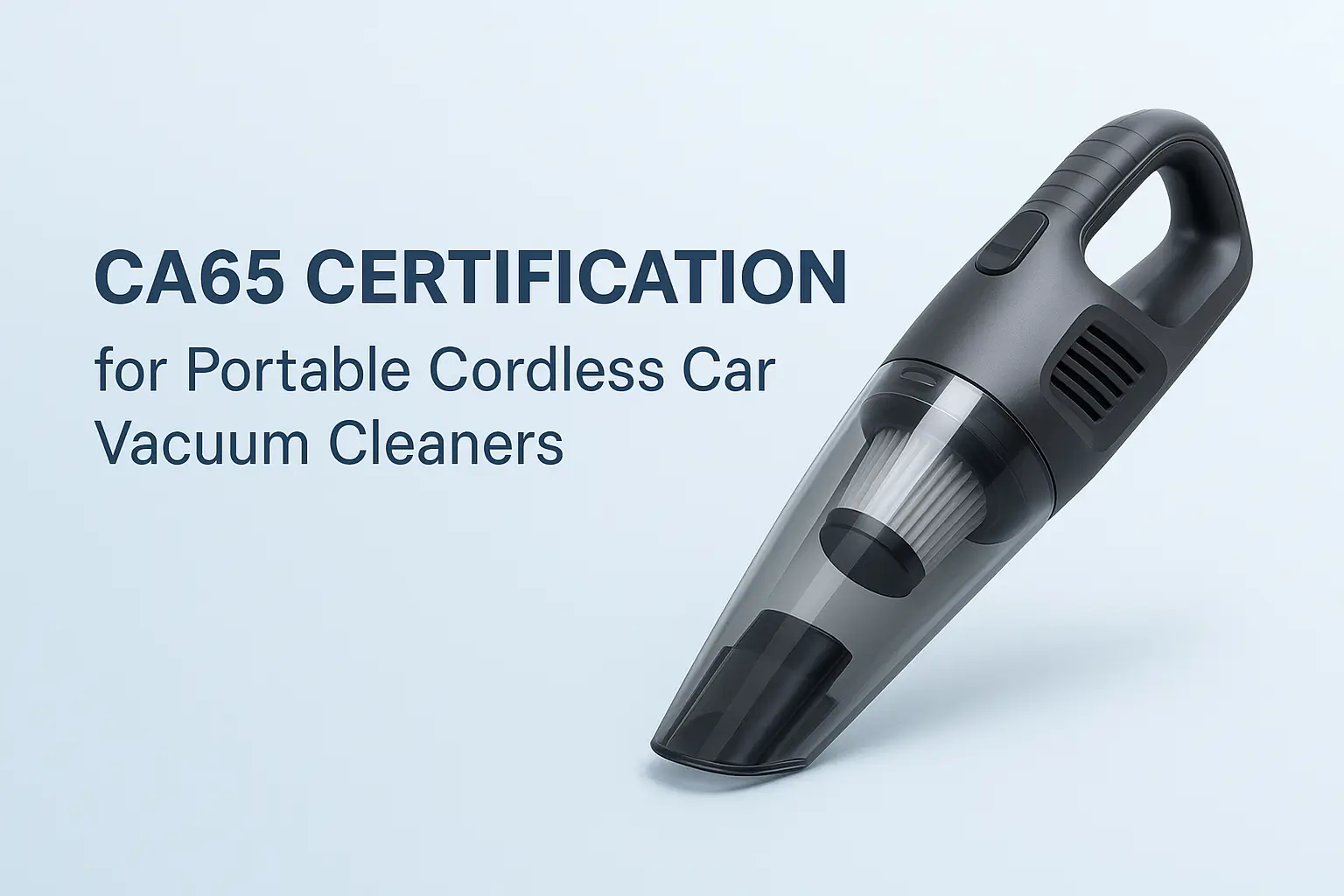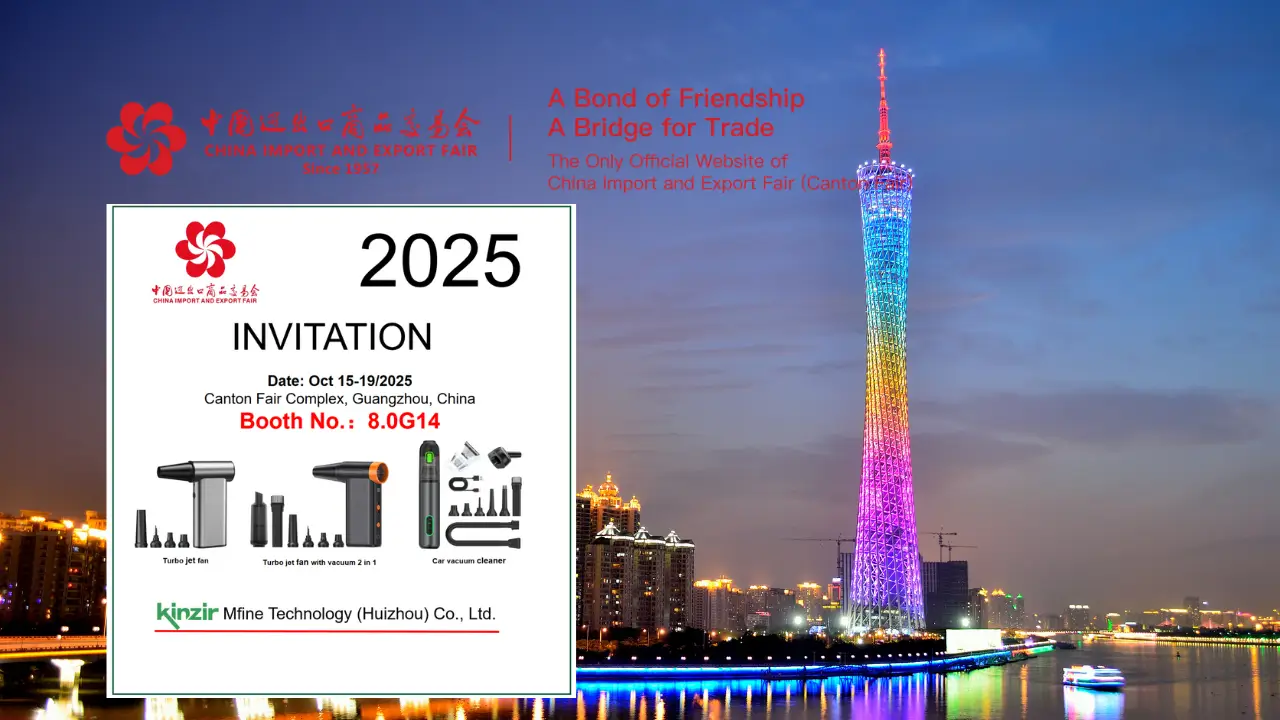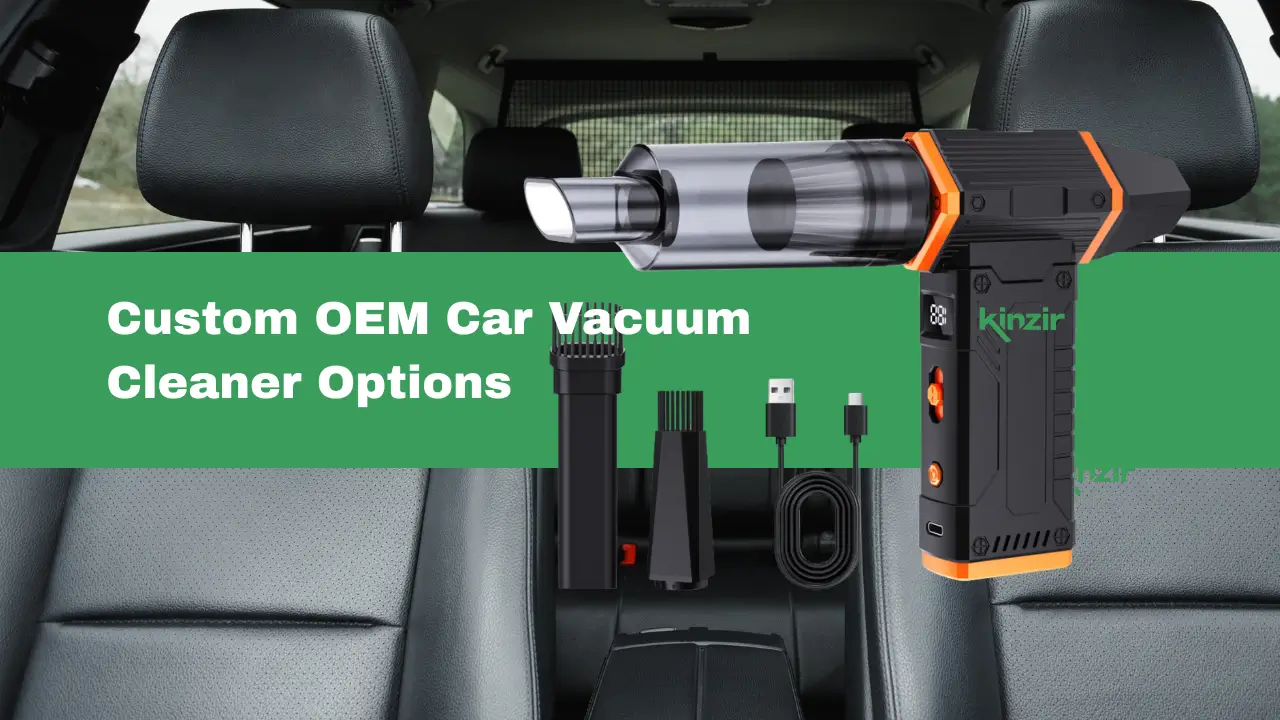When looking at how products are made and shipped, you might notice terms like SKD, CKD, and CBU. If you want to understand SKD vs CKD vs CBU, this export guide will give you clear answers. The main difference between them is how much of the product is built before it’s shipped to its final destination.

You will see these terms often in the auto and electronics industries, but they also matter for things like turbo jet fan blowers made by Kinzir, the leading manufacturer in China. These labels can affect the price, shipping, and even local jobs.
Knowing which method is used helps you understand costs and benefits in global trade. It also makes it easier to compare products and choose the best option for your needs.
Background: 2025 High-Tariff Policy Under Donald Trump
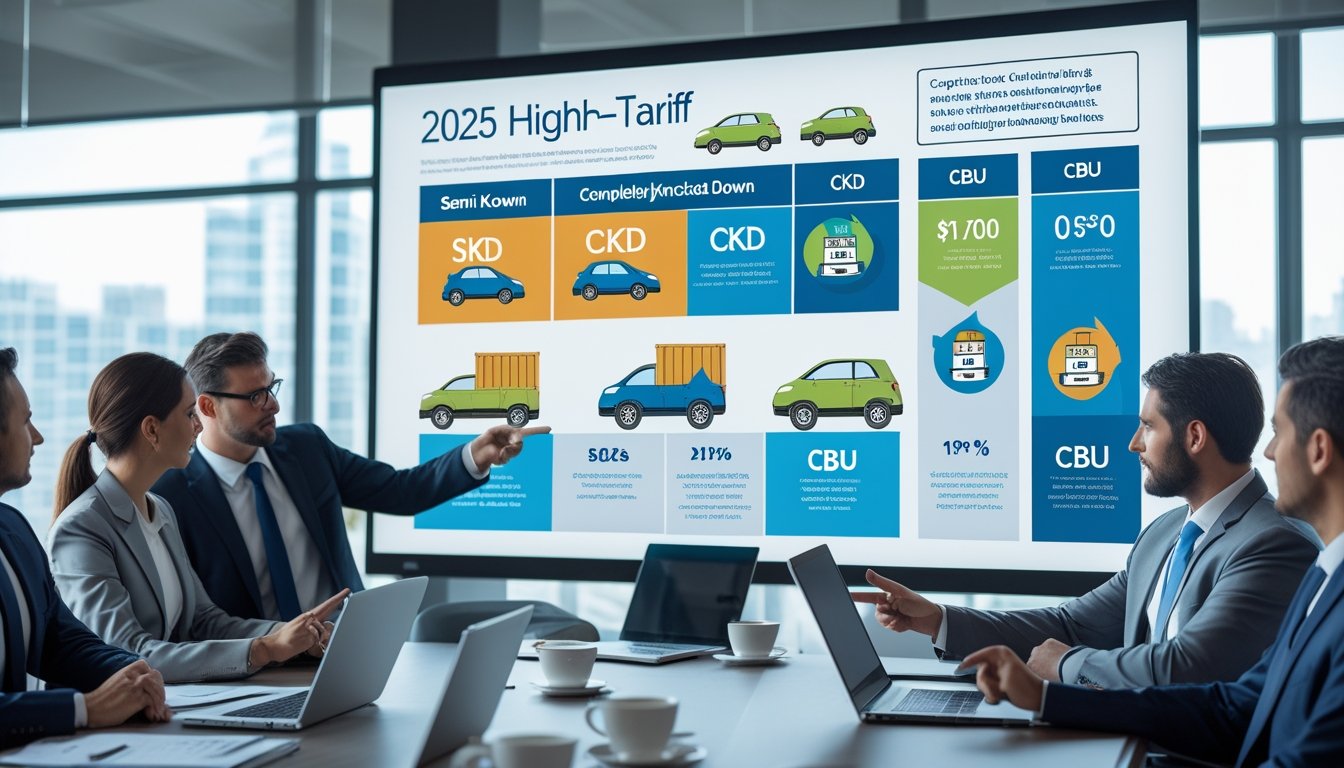
The 2025 U.S. tariff policy under Donald Trump changes how you compare SKD vs CKD vs CBU imports. Higher tariffs directly affect your costs, especially if you import from China or other countries facing new trade restrictions.
Overview Of Trump’s 2025 Tariff Hikes On China And Other Key Trading Partners
In 2025, Donald Trump’s administration expanded tariffs on goods from China and other major trade partners. These tariffs are part of the ongoing trade war and are known as Section 301 China tariffs. Many items, including electronics, appliances, and vehicle parts, now face higher import taxes.
The aim is to encourage more U.S. manufacturing and pressure exporters in China and elsewhere. The new tariff rates reach up to 60% for some products from China. U.S. Customs and Border Protection (CBP) is responsible for collecting these duties.
A table of average tariff rates (2024 vs. 2025) on certain electronics is shown below:
| Product | 2024 Tariff | 2025 Tariff |
|---|---|---|
| Smartphones | 25% | 50% |
| Washing Machines | 20% | 40% |
| Air Conditioners | 15% | 35% |
Impact On U.S. Import Duties For Electronics & Small Appliances
You will pay more when importing electronics, appliances, or parts from countries targeted by the Trump tariff policy 2025. CBP uses shipment declarations to assign tariff codes and calculate duties on each item.
For a CBU (completely built unit), you must pay the full new tariff. For SKD (semi-knocked down) or CKD (completely knocked down) kits, duties could be lower if you handle final assembly in the U.S. But if CBP finds that assembly was minimal or only for tax benefits, they may still charge the higher rate.
Large brands change their supply chains to adapt. Brands may switch to SKD or CKD kits to lower tariff costs, but this brings added work and longer lead times for you.
How This Policy Reshapes Exporter Strategies Worldwide
Exporters are rethinking their approach to the U.S. market because of these tariffs. Many Chinese factories now ship products as SKD or CKD instead of fully assembled CBU to reduce duty costs. Some set up final assembly plants in countries with lower tariffs.
Manufacturers are creating new supply routes. Products might be partially made in China, then finished in Southeast Asia or Mexico. This allows exporters to use different customs codes and benefit from lower rates.
You may notice more mixed-origin goods and complex logistics. This policy forces global companies to be flexible and creative to keep their prices competitive in the U.S.
What Readers Will Learn
By understanding these tariff changes, you can make better choices about SKD vs CKD vs CBU imports. You will see how higher CBP duties can raise your costs. Knowing the key differences helps you decide which method fits your business under the Trump tariff policy 2025.
You will also be able to spot exporters’ new strategies and adjust your supply chains. This helps you avoid unexpected costs and shipping delays caused by trade-war tariff impact.
What Are SKD, CKD & CBU? Definitions & Key Differences
SKD vs CKD vs CBU are terms that describe how vehicles and machinery are shipped and put together. Each method affects the cost, import rules, and local job opportunities in your country.
SKD (Semi-Knocked-Down)
SKD stands for Semi-Knocked-Down. In this method, vehicles are partly assembled at the factory, then shipped in large parts like the chassis, body, and engine. When the parts arrive, local plants finish putting them together.
Semi-knocked-down kits (SKD) often include the main structure and major pieces already connected. This saves time during local assembly but gives fewer local jobs compared to CKD. You may see this method used where factories want simple, quick assembly without handling lots of tiny parts.
Import duties for SKD vehicles are often in the middle range. They are higher than CKD, but lower than CBU. The SKD method helps companies save money on shipping and some import taxes, while still supporting local work.
CKD (Completely-Knocked-Down)
CKD stands for Completely-Knocked-Down. In this method, the vehicle is broken down into as many separate parts as possible. Each part, like the engine, seats, doors, and even small components, is packed and shipped separately.
CKD assembly method requires advanced setup at local factories. Workers must build the vehicle almost from scratch using the shipped parts. This creates more local jobs and can give a country’s workers new skills.
Import taxes on CKD kits are usually the lowest, because the process supports local industry. However, the process takes more time and needs better equipment at the local assembly plant. CKD is often used in countries with policies that encourage local manufacturing.
CBU (Completely-Built-Up)
CBU means Completely-Built-Up. These vehicles are fully made and assembled in the country of origin. After this, they are shipped as finished products to the destination market.
CBU export is fast and simple for car makers, since the entire product only needs to be loaded and shipped. For you as the buyer, CBUs arrive ready to use, with no extra building required locally.
Import taxes on CBUs are usually the highest. Some countries do this to protect their own auto industry. If you want a car quickly and fully built, you are more likely to see CBUs in your market, but they will often cost more due to these higher import fees.
Quick Comparison Table
| Category | SKD (Semi-Knocked-Down) | CKD (Completely-Knocked-Down) | CBU (Completely-Built-Up) |
|---|---|---|---|
| Assembly | Partially assembled, some work | Parts shipped separately, more work | Fully built, no local work needed |
| Import Tax | Medium | Low | High |
| Local Jobs | Some | More | Few |
| Time to Sell | Medium | Longest | Fastest |
| Cost | Medium | Usually lowest | Usually highest |
| Popular Use | Mid-level markets | Local assembly required by law | Fast delivery, limited local input |
Tariff Implications & Cost Structures
Understanding SKD vs CKD vs CBU means knowing how each affects import duties, overall price, and total landed cost. The way products are shipped and assembled can change what you pay in duties, affect your supply chain, and even help you lower tariffs with smart strategies.
How Tariffs Are Calculated On SKD, CKD & CBU
Tariffs on CBU (Completely Built Up) are usually highest. Customs views them as finished goods, so they attract full import duties. In contrast, CKD (Completely Knocked Down) kits, which require local assembly, are often taxed at a much lower rate. Some countries set special rules if most of the work is done onsite.
SKD (Semi Knocked Down) sits in the middle. It’s partially assembled when imported and usually faces lower duties than CBU but higher than CKD. This method is useful if you want to start with a lower investment in local assembly but still save on duties.
Many companies use tariff engineering strategies to optimize imports. For example, by importing an electric air duster as a CKD kit, you may qualify for reduced-duty assembly and lower-tariff assembly methods instead of paying the full CBU rate. Some products, like a wholesale electric air duster, can benefit from this approach.
Typical Duty Savings With CKD Vs. CBU
Switching from CBU to CKD can cut import duty rates by 30% to 60%, depending on local laws. Governments often give these savings to create more local jobs and encourage investment in assembly plants.
For example, if CBU duty is 40%, a CKD kit may only face 15%-20%. SKD kits usually save less—maybe 10% to 25% off normal CBU rates.
Here’s a quick comparison:
| Import Type | Typical Duty Rate | Duty Savings |
|---|---|---|
| CBU | 35%-60% | — |
| SKD | 25%-40% | 10%-20% |
| CKD | 10%-30% | 30%-60% |
Total duty savings depend on product type, import country, and if your parts qualify for local rules.
Hidden Costs: Logistics, Storage & Rework
Using reduced-duty assembly methods like CKD or SKD also brings hidden costs. With CKD, you need a bigger warehouse because parts arrive disassembled. Logistics can get more complex since you must track hundreds of parts per product and plan for just-in-time delivery.
There’s also a risk that assembly lines face delays or quality problems, leading to extra rework. You must train workers and invest in quality control to avoid shipping flawed products.
Bulk orders of knockdown kits may also raise your storage costs. Over time, these expenses can partly offset your import duty savings if not managed well.
Total Landed Cost Analysis
Calculating your total landed cost means adding up everything: product cost, shipping, storage, tariffs, and rework. Even with import tariff reduction from CKD or lower-tariff assembly, you should include costs like:
- Logistics and transport fees
- Local labor for assembly
- Extra storage space
- Customs clearance charges
- Quality inspections
A careful total landed cost calculation lets you compare SKD vs CKD vs CBU accurately. If your import duty savings on CKD are high and you have good local efficiency, it can be cheaper than CBU, even after adding hidden costs. But for some simple products, CBU may still offer the lowest overall cost if local setup is expensive or inefficient.
Assembly Process Considerations
When looking at SKD vs CKD vs CBU, you need to carefully plan how your assembly process will be set up, managed, and optimized. Each method comes with different steps, costs, and regulatory concerns that can directly affect your time to market and final product quality.
Infrastructure & Partner Selection In Destination Market
A major task is choosing the right facility for local assembly. You need to check if the destination market has existing industrial infrastructure or if you’ll have to build new assembly lines.
Look at logistics and warehousing needs for storing parts, tools, and finished goods. Finding reliable assembly partners is crucial—review their technical skills, past projects, and financial stability before committing. Using Kinzir assembly kits for products like electric dust blowers can help, but you must ensure partners can handle the kits’ assembly requirements.
Consider logistics options. Just-in-time assembly may reduce inventory costs, but you will need robust transport and supply chain systems.
Quality Control & Compliance Requirements
You must maintain high product quality, whether using SKD, CKD, or CBU strategies. CKD kits usually require more local parts, so you need stricter quality control for parts not delivered from the original manufacturer.
Set up post-assembly testing to make sure finished products meet required standards. This might involve performance tests, safety checks, and final inspections. Coordinate closely with your local partner’s quality control teams to prevent issues.
Compliance with local market regulations is non-negotiable. For electronics, verify the assembly process meets both international and destination-country standards. After-sales support must also be in place, especially for products assembled using CKD kits—make it easy for customers to get repairs or replacements when needed.
Packaging, Labelling & Customs Documentation
Every assembly approach needs its own set of packaging and labeling plans. With SKD and CKD, you often ship multiple components that might require careful labelling to avoid confusion during assembly.
Customs documentation is a major task. Incomplete or incorrect documents can delay the customs clearance process and add hidden costs. Label your packaging clearly with country of origin, kit contents, and compliance information.
Work with experienced customs brokers or 3PL partners to smooth paperwork processing. Make sure all customs documentation meets both the export rules of the original country and import standards of the destination.
Timeline & Lead-Time Impacts
The time it takes from shipment to final assembly varies depending on your method. CBU units have the shortest lead times, since products arrive ready to sell. SKD and CKD require more steps—shipment, customs, local storage, and then assembly.
International shipping regulations may slow down the delivery of assembly kits. Delays in one step can disrupt your entire schedule, especially if you use just-in-time logistics. Local assembly line setup also adds extra days or weeks before production starts.
Involving multiple partners and steps makes careful planning crucial. Always build in buffers for unexpected issues, especially if you rely on components that need specific electronics assembly methods. For custom branding or local market adaptation, OEM services may require additional lead time for design and approval stages.
Kinzir’s Recommended Approach For Electric Air Dusters & Turbojet Blowers
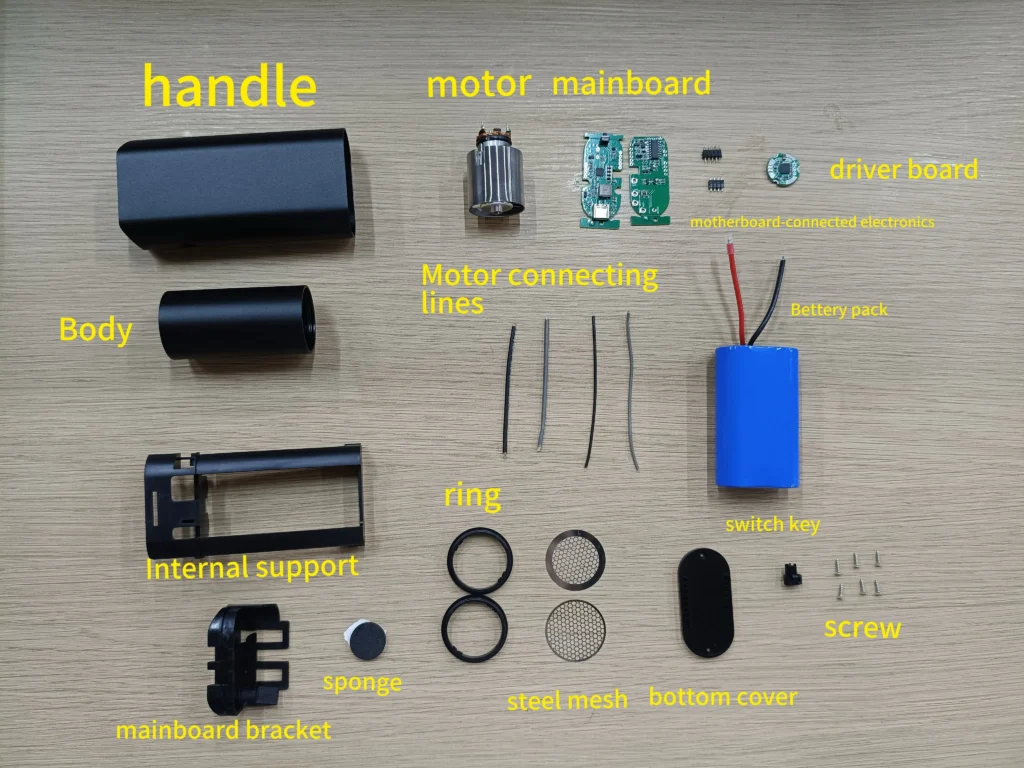
Choosing between SKD vs CKD vs CBU depends on your goals. Costs, speed of delivery, and local tariffs all affect which method is best for your electric air duster or turbojet fan blower export plans.
Why Kinzir Leans Toward SKD For Certain Markets
For many export markets, SKD (Semi Knocked Down) offers a strong balance between cost savings and control. You get your electric air dusters or mini turbojet fan blowers shipped in partially assembled form, allowing you to avoid high import duties in most countries.
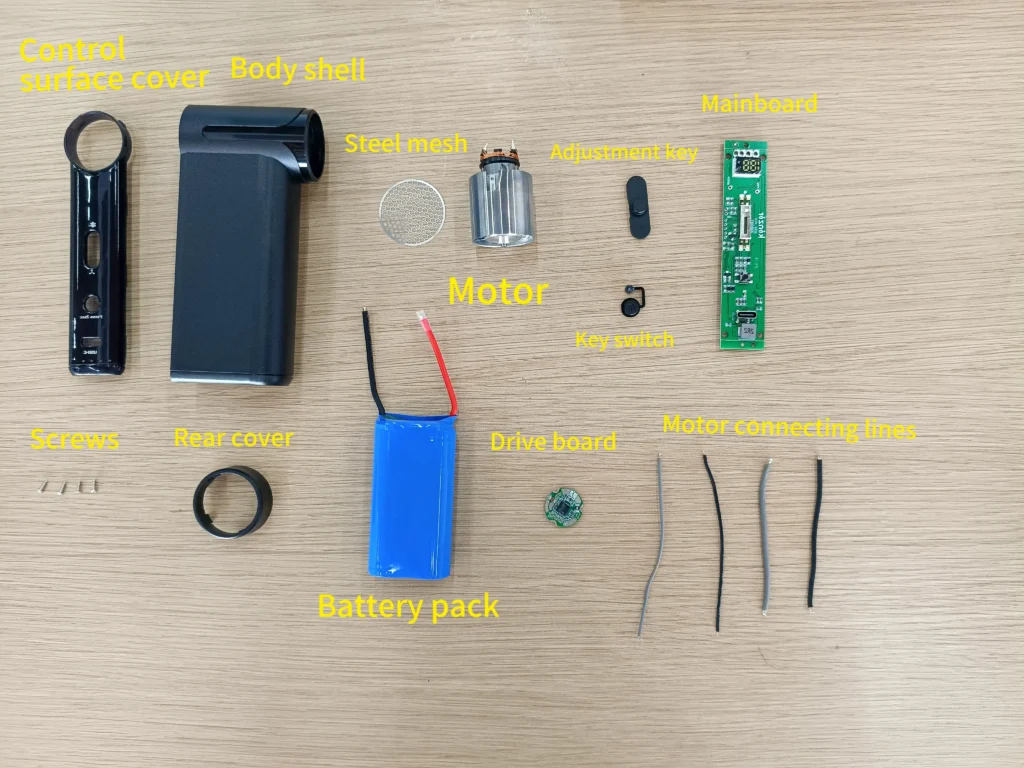
Kinzir recommends SKD for distributors who want lower tariffs but do not want the complexity of handling too many tiny parts, as with CKD. You can still keep some assembly steps local, which meets many government requirements.
SKD lets you access lower tariffs on electric air duster exports while speeding up delivery. These kits are easier to store and assemble compared to CKD and can be quickly configured for regional packaging or manuals.
If you need bulk shipments but want a balance of savings and simplicity, SKD is usually best. It also reduces warehouse costs because you don’t store completed products.
When CKD Makes Sense (High-Tariff Regions)
CKD (Completely Knocked Down) is best when local rules or tariffs are the main challenge. Some regions, including parts of South America, require even more local assembly. With CKD, electric air dusters and turbojet blowers arrive in the most basic parts, which means almost every screw and casing is separate.
You’ll need technical support, trained staff, and more steps in your facility. If your country sharply lowers tariffs for goods with high local content, moving to CKD is worth considering. You can control most of the product’s value chain, which can boost local jobs and meet government incentives.
The cost and time for CKD are higher, so only choose this if the tariff savings are large or you have a strong team. This route is popular for large mini turbojet fan blower assembly factories in protected markets.
Exceptions Where CBU Still Wins (Speed To Market)
CBU (Complete Built-Up) means you get the finished product, ready for sale. This option is best when speed is critical, tariffs are low, or your resources for assembly are limited.
If you need to launch quickly or have urgent buyers, CBU cuts weeks from delivery. For example, if you’re sourcing powerful cleaning electronics like the AD57 Mini Turbo Jet Fan Blower, you can start selling as soon as the shipment arrives. There’s no need for local assembly or extra staffing.
CBU is also useful for short-term projects, trade shows, or market testing. However, you may pay more for each unit due to higher tariffs and shipping costs. Choose CBU if time-to-market matters more than extra duties or if you need to maintain strict product quality standards.
Kinzir’s Assembly Kit Contents & Support Services
Kinzir provides detailed assembly kits with every SKD or CKD shipment. A typical kit for mini turbojet fan blowers or electric air dusters will include:
- Main casing and motor
- Fan blades
- Batteries (where permitted)
- Internal wiring sets
- All required screws and fasteners
- Instruction manual in multiple languages
Support services from Kinzir include remote training, technical troubleshooting, and supply chain coordination if needed. You can also request extra manuals or sample videos for new teams.
When you order in bulk, for example from the mini turbo jet fans category, Kinzir can bundle customized packaging or spare parts based on your market’s needs. All kits are prepared for clear traceability, making inventory management simple.
Kinzir’s support helps you comply with local rules, reduce assembly mistakes, and get mini turbojet air blowers to market faster.
Case Study: Export To Brazil
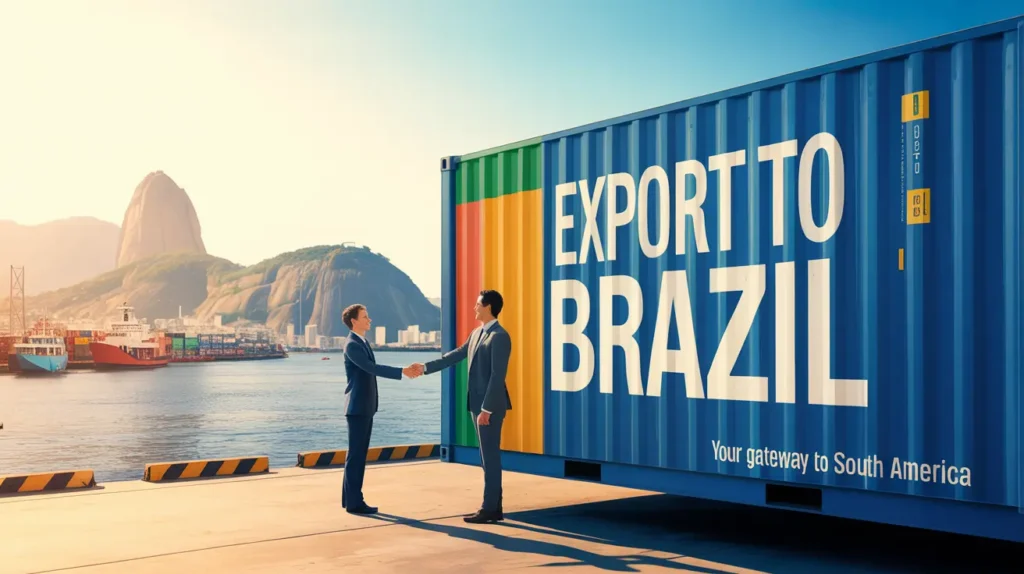
When choosing between SKD vs CKD vs CBU, your final costs, production timeline, and compliance can change a lot depending on the destination market. By looking at Brazil as an example, you can see how taxes and rules shape the best way to enter and serve a market.
Background: Market Tariff Structure & Local Requirements
Brazil applies high import taxes on finished vehicles, making CBU units very expensive. Tariffs on CBUs can be more than 35%.
Brazil’s government offers lower tax rates for SKD and CKD imports, but requires a certain percentage of parts to be sourced locally. The federal “Inovar-Auto” program pushed for local manufacturing and higher local content, with extra tax breaks for those who follow these rules.
Import and customs processes are strict. Meeting emissions and safety standards is also required, which can delay approval if not planned well. Language barriers and detailed paperwork add more complexity. To enter Brazil’s market successfully, you must understand tariffs, local content rules, and compliance issues.
Chosen Method (SKD/CKD/CBU) And Rationale
Given the high import taxes on CBU, many companies choose CKD or SKD methods for Brazil. In this case, CKD kits were selected.
With CKD, you ship all parts disassembled and assemble them at a local factory. This meets Brazil’s local content rules and allows you to claim tax breaks. CKD also offers more flexibility to adjust parts or features to fit local demand.
SKD kits are less common for Brazil because they involve partial assembly and do not always meet the required local value-added standards. CBU is the fastest but is usually too expensive because of tariffs unless the market size is small or speed is critical.
Cost Comparison & Time-To-Market Outcomes
Below is a simplified cost and timeline comparison for each approach:
| Method | Import Tariff | Tax Incentives | Assembly Cost | Time-to-Market |
|---|---|---|---|---|
| CBU | High (35%+) | None | None | Fastest |
| SKD | Medium (18-25%) | Limited | Moderate | Moderate |
| CKD | Low (10-16%) | High | High (local staff, plant) | Slowest |
CKD has the lowest tariffs and best incentives, but needs a large upfront investment to set up local assembly. Time-to-market is longer than CBU because of building the plant, training workers, and passing local checks. However, this cost is offset over time by lower duties and better market acceptance.
CBU offers fast entry, but the price is much higher. In many cases, SKD does not provide enough tax savings or flexibility to be worth the effort.
Lessons Learned
Setting up CKD in Brazil took longer than expected because of local legal processes and supply chain delays. However, in the end, taxes saved were significant. Partnering with local suppliers early was critical to meet local content rules.
You must carefully plan for hiring, staff training, and plant certification. Customs and documentation can be slow, so expect delays. Working closely with local authorities and understanding regulations avoids fines and holds.
If price and market share matter in Brazil, CKD gives you the best balance between cost savings and compliance, but it is not quick. Build in extra time for setup and always have backup suppliers ready.
Step-By-Step Guide To Choosing Your Assembly Strategy

When you compare SKD vs CKD vs CBU, start by looking at your main goals. Decide if you want to save costs, enter new markets, or focus on local manufacturing.
1. Know Your Market
- Research local laws and import duties.
- Some countries encourage local assembly to boost jobs.
- Check if your products match local demand.
2. Review Supply Chain Needs
- Can your supply chain handle moving parts or finished goods?
- SKD and CKD kits help optimize supply by reducing shipping costs.
- CBU units need less local handling but may cost more in tariffs.
3. Think About Export and Manufacturing Strategy
- If you export from China, look at China’s rules for knock-down kits.
- Cross-border manufacturing can lower costs if managed well.
- SKD: Fewer parts to assemble; good for simple setups.
- CKD: More local parts and work; suits markets with high tariffs on finished goods.
- CBU: Complete unit; best when local assembly is not needed.
4. Evaluate Local Benefits
- Local assembly can qualify you for tax breaks or government support.
- Adding value in the factory may help your brand and meet home country rules.
| Strategy | Local Work | Shipping | Tariffs | Speed |
|---|---|---|---|---|
| SKD | Low | Medium | Lower | Medium |
| CKD | High | Low | Lowest | Slow |
| CBU | None | High | High | Fast |
Choose the mix that matches your goals for cost, speed, and local benefits.
Conclusion
When thinking about SKD vs CKD vs CBU, it’s important to look at your business aims, cost limits, and the rules in your country.
SKD means more parts shipped partially assembled.
CKD means parts are shipped unassembled.
CBU means vehicles arrive fully assembled.
| Type | Assembly Level | Shipping Cost | Local Jobs | Import Duties |
|---|---|---|---|---|
| SKD | Semi-assembled | Medium | Medium | Often lower than CBU |
| CKD | Unassembled | Low | High | Usually lowest |
| CBU | Fully assembled | High | Low | Usually highest |
Think about:
- Your budget
- Laws about local building
- Shipping limits
- Job creation in your area
Take a closer look at the needs of your project. Pick the route—SKD, CKD, or CBU—that matches your main goals.
If you still have questions, talk to industry experts or trade officials in your country for guidance.
Frequently Asked Questions
When choosing between SKD vs CKD vs CBU, you need to look at the differences in manufacturing steps, customs duties, and how products are delivered. These terms shape costs, taxes, and how products cross borders in the automotive industry.
What does CKD stand for in the automotive industry?
CKD means Completely Knocked Down. This is when all the car parts are shipped separately and assembled at a factory in the destination country. It helps companies save on import taxes and sometimes meet local content requirements.
How do SKD assembly processes differ from CKD in manufacturing?
SKD stands for Semi-Knocked Down. SKD kits come with some assembly already completed, with a few major parts still separate. CKD kits have nearly every part disassembled.
SKD lets you assemble vehicles faster but often has higher import costs compared to CKD.
What are the advantages of CBU vehicles over CKD or SKD models?
CBU stands for Completely Built Up. These vehicles are shipped fully assembled and ready to use.
CBU models save time since no local assembly is needed. They often have higher import tariffs or taxes because they do not support local jobs or manufacturing.
What impact do SKD and CKD imports have on customs and taxes?
SKD and CKD imports can mean lower customs duties compared to CBU vehicles. Customs uses Harmonized System (HS) codes, such as HS 8414 for blowers, to classify goods and assign tax rates.
Customs valuation methods decide the declaring value. Some companies try to minimize tariffs, but they must stay within legal boundaries to avoid tariff circumvention.
In what contexts are CBU products most commonly used?
CBU products are common when factories in the shipping country use special technology or quality controls that are hard to match elsewhere. They are often used for luxury goods, low-volume models, or when time-to-market is important.
What are the potential cost benefits of choosing CKD over SKD in production?
CKD kits let you save more on tariffs because more work is finished locally. This can cut labor costs and help meet local rules for assembly.
CKD also gives more flexibility to use local parts. This can lower production costs even more, especially when compared to SKD kits.
